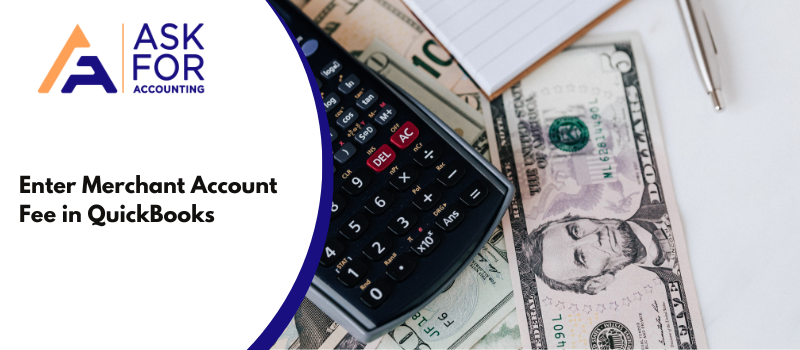In this article, you read how to record “Merchant Account Fee in QuickBooks”. For accounts that generally have high volume, entries are charged more but sometimes smaller businesses often feel the heat.
QuickBooks small business accounting software not only helps in handling the accounting operations but also takes care of the productivity of the business owner. The software is embedded with highly productive features of invoicing, tracking income & sales, recording payments, etc.
What is a Merchant Account Fee in QuickBooks?
If you invoice a client for $X and they pay you via PayPal, a part of that is taken away as PayPal fees. If you record the amount received of $X in QuickBooks, then it will show your bank account balance incorrectly. Thus to portray the correct balance you would need to create Merchant Account Fees. Record the customer’s payment, and then pay X dollars into the expense account, thereby taking it from your bank account. This will allow you to see exactly where your money is going.
Merchant account fee within QuickBooks for credit card acceptance helps an organization charge customers. The same amount then gets accumulated by the provider in the merchant’s account.
You can charge your customer’s card in many different ways. The merchant within only charges a small fee for the services provided. On top of the standard fees charged, a merchant also charges monthly fees as well, these are generally the maintenance charges.
Tips to Enter Merchant Fees in QuickBooks
- Note that the amount you record in the Receive Payment window should be the full amount of the invoice.
- Recording a payment form for any shop for the full invoice amount of $X.
- Now record the entry.
- Choose the Quick create option and choose to click on Bank entries.
(Eg. Just for the sake of this example let’s say that you have received $80 in total and have an invoice amount of $85 that needs to be recorded as the bank fee and the merchant fee. Thus now the work will go like this:)
- Go to “Add New Deposits” and select Bank Charges from the drop-down box, then enter a negative $-5.
- Finally, the displayed amount is down to $80. This figure will now need to match the original amount that you have received. Click Save and Exit the window.
- The process can be helpful if you use a PayPal account when you need to record PayPal fees. To create a new account for PayPal fees.
- After following the above-listed steps, you would need to verify that the amount of the invoice and the amount of the payment received are the same. If this comes correct then only your accounts receivables will be displayed correctly and your bank will show a deposit of $80.
Though recording merchant account fees in QuickBooks is a bit tedious for beginners but the process ultimately is simple. Having a merchant account maintained within the program can bring a big difference and can further help you, in easily reconciling transactions with your bank.
Hope you were able to sort out your issue related to merchant accounts, but if there is any problem that you still might face then you can get in touch with us now. Our QuickBooks experts will guide you on every step no matter how big or small it will be. You can even give us a call at our QuickBooks Consultant for USA, UK, and Canada and talk to our Experts now.

